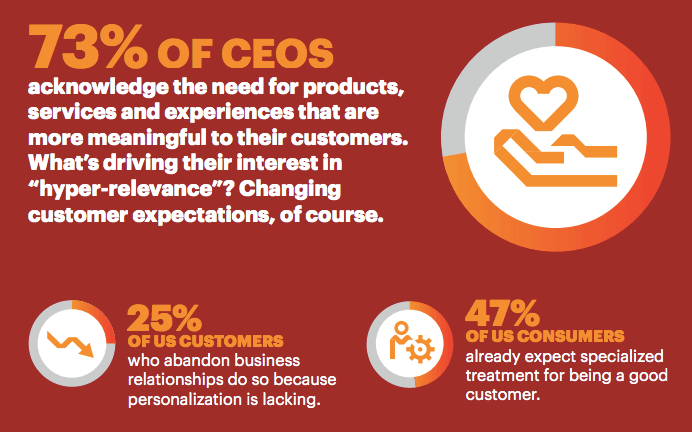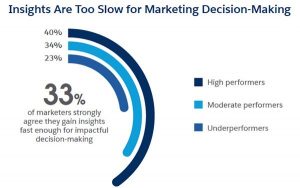As consumers and regulators increase scrutiny around data, contributor Nina Caruso says there’s an opportunity to adopt a customer-centric approach to privacy while providing personalized experiences.

Seven in 10 consumers expect a personalized experience from the brands they encounter, according to a survey of 3,000 Americans and Britons that Conlumino conducted in 2014.
While that’s not shocking, this need for personalization can impact a customer’s loyalty and is a challenge that brands big and small still struggle with daily.
For nearly a decade, marketing and publishing departments have responded to this demand by using data management platforms — or DMPs — to organize customer data and deploy that information for tailored advertisements.
These days, however, customers want more than just targeted ads. They expect top-to-bottom personalization every time they interact with a brand — whether they’re calling a company’s helpline, viewing content in a mobile app or watching an in-flight commercial.
How to respond to heightened consumer demands
Responding to these sky-high expectations will require brands to move their DMPs out of the marketing and media department silo. They’ll need a more comprehensive, experience-based DMP model — one that brings together a rich collection of customer data drawn from multiple company departments to ensure that every customer interaction is truly personal.
When brands fail to personalize content, customers notice. In fact, an Infosys survey found that nearly one-third of respondents wish their shopping experience were more personalized than it currently is. And a recent study by Accenture found that a quarter of customers who abandoned a business relationship in 2016 did so because of a lack of personalization.

Yet most brands aren’t doing nearly enough to create customized consumer experiences. The Infosys study found that only 18 percent of retailers surveyed said they had any kind of personalization in place.
So-called “walled gardens” like Google and Facebook are of little help. When brands use these platforms to interact with customers, they receive little useful data in return, making it all the more difficult to tailor customer experiences over time.
Internal data is the answer
That’s why companies need to make effective use of their own internal data to create more individualized experiences.
Unfortunately, most current strategies for organizing customer information fall far short of this goal.
Today, brands normally store and analyze customer data using a DMP. Since marketing departments often oversee DMPs, the data usually pertains to questions specific to marketing efforts — such as whether a customer opened a promotional email, watched a social-media ad or clicked on a particular offer.
The problem with this approach is that marketing and advertising are far from the only ways in which brands and customers interact. And by limiting the scope of DMPs in this way, brands are passing up valuable opportunities to learn more about their customers — and to use that data to create more personalized and impactful experiences.
By contrast, an experience-based approach to DMPs draws and activates on data from the entire organization. Data from the marketing team might be added to information from a company’s call center, editorial team, IT department, publisher, loyalty program and third-party vendor.
How a unified data set can benefit brands and customers
Once these diverse data assets are collected in a DMP, brands can use them to personalize and activate experiences at every touch point along a customer’s journey. For instance, data about an individual’s website activity could be used to anticipate that person’s questions before they have a chance to ask them.
Imagine a customer logs into his cable company’s website and spends 10 minutes setting up automatic billing. He’s uncertain whether the first payment went through; he calls the company helpline.
Imagine how impressed he’d be if the automated answering service immediately told him, “Don’t worry, we’ve received your payment — if we’ve answered your question, feel free to hang up.”
This impacts both overall brand engagement and how the call center team fields customer inquiries.
Similarly, a financial services company could tap its travel group, loyalty team and data science department to gather data about which consumers are most likely to sign up for a credit card, or to find out which customers are “big spenders.” That information could then inform what a specific customer sees after signing on to the brand’s website.
The more comprehensive view created by an experience DMP could also allow companies to tailor the messages customers receive via their connected televisions, in-flight devices or “Internet of Things” technologies like smart fridges.
Experience DMPs offer a variety of benefits for brands, but they also empower marketers to take customer privacy seriously. New regulations such as the General Data Protection Regulation (GDPR) present an opportunity for brands to take a customer-centric approach to privacy while continuing to provide the personalized experiences they desire. Respecting privacy and using sophisticated DMPs to ensure data is secure is just one more way marketers can delight their customers.
The old marketing DMP model passes up valuable opportunities to give customers what they want — personalized interactions that speak to them as individuals. Experience DMP answers that call by making the best use of every bit of data at a brand’s disposal.
Opinions expressed in this article are those of the guest author and not necessarily Marketing Land. Staff authors are listed here.
Marketing Land – Internet Marketing News, Strategies & Tips
(46)
Report Post





